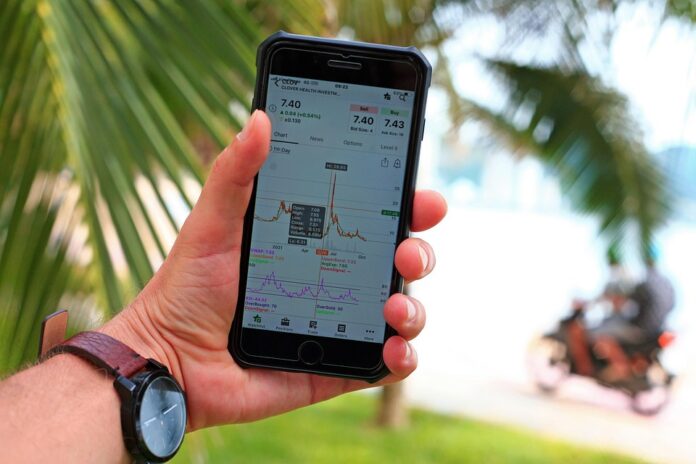Introduction
In the ever-evolving landscape of financial markets, volatility remains a defining characteristic of certain stocks. Understanding and trading volatile stocks can be both rewarding and risky. This report delves into the most volatile stocks, their characteristics, and effective trading strategies.
Understanding Volatile Stocks
Volatile stocks are those that experience significant price fluctuations over a short period. These fluctuations can be caused by various factors, including market sentiment, earnings announcements, geopolitical events, and changes in economic indicators.
Characteristics of Volatile Stocks
Volatile stocks typically exhibit the following traits:
1. **High Beta:** Stocks with a beta greater than 1 are considered more volatile than the overall market. For instance, a stock with a beta of 1.5 is expected to move 1.5 times more than the market.
2. **Frequent Price Swings:** These stocks often experience rapid price changes, sometimes within the same trading day. For example, during earnings season, a tech stock might swing 10% in a single day based on earnings results.
3. **Low Market Capitalization:** Smaller companies often have less liquidity, leading to larger price swings. For instance, small-cap biotech firms can see significant price movements based on trial results.
4. **High Trading Volume:** Volatile stocks usually have higher trading volumes during price movements, indicating strong interest from traders.
Examples of Volatile Stocks
1. **Tesla, Inc. (TSLA)**: Tesla has demonstrated extreme volatility, particularly around earnings reports and product announcements. Over the past year, TSLA has experienced daily price swings averaging 5% to 10%.
2. **GameStop Corp. (GME)**: In early 2021, GME became synonymous with volatility, fueled by social media discussions and short selling. The stock price soared from around $20 to an all-time high of $483 in a matter of weeks.
3. **AMC Entertainment Holdings, Inc. (AMC)**: Similar to GME, AMC experienced sharp price fluctuations due to retail investor interest and social media influence, leading to multiple instances of daily price changes exceeding 20%.
Factors Influencing Stock Volatility
Understanding the factors that influence stock volatility is crucial for traders.
Economic Indicators
Economic reports, such as employment data, inflation rates, and GDP growth, can significantly impact market sentiment and stock prices. For instance, a better-than-expected jobs report can lead to a rally in stocks, while disappointing economic news can trigger sell-offs.
Company-Specific News
Earnings announcements, product launches, and executive changes can lead to substantial price movements. For example, when a major tech company announces a new product, its stock may experience significant volatility based on market reactions.
Market Sentiment
Investor sentiment can lead to dramatic price movements, especially in the age of social media. Stocks like GME and AMC have shown how collective investor behavior can lead to unforeseen volatility.
Trading Strategies for Volatile Stocks
Trading volatile stocks requires a strategic approach to mitigate risks while maximizing potential gains.
Day Trading
Day trading involves buying and selling stocks within the same trading day. Traders capitalize on small price movements, using technical analysis to identify entry and exit points. For example, day traders may look for stocks that have moved significantly in pre-market trading to establish positions quickly.
Example Scenario
Suppose a trader notices that TSLA shares are up 6% in pre-market due to positive news. The trader may buy shares and set a target to sell once the stock moves up another 2%, ensuring to set stop-loss orders to limit potential losses.
Swing Trading
Swing trading involves holding positions for several days or weeks to capitalize on expected upward or downward market shifts. Traders often use technical indicators to identify trends and reversals.
Example Scenario
If a trader identifies that AMC has a strong support level at $30, they might buy shares when the stock approaches this price, expecting a rebound. They may set a target price of $40, with a stop-loss at $28 to manage risk.
Options Trading
Options trading allows traders to speculate on stock movements without owning the underlying stocks. Using strategies like straddles or strangles can be effective for volatile stocks.
Example Scenario
A trader anticipating volatility in GME might purchase both call and put options at a strike price of $200, benefiting from significant price movements in either direction.
Risk Management Techniques
Effective risk management is essential when trading volatile stocks.
Setting Stop-Loss Orders
Stop-loss orders help traders limit losses by automatically selling a stock when it reaches a predetermined price. This strategy is crucial for managing potential losses in volatile markets.
Position Sizing
Determining the appropriate position size based on risk tolerance is vital. Traders should only risk a small percentage of their trading capital on any single trade, typically between 1% to 3%.
Diversification
Diversifying across different sectors and asset classes can reduce overall portfolio risk. For instance, a trader might allocate capital to both volatile tech stocks and stable blue-chip stocks to balance risk.
Conclusion
Trading volatile stocks can be lucrative for those who understand the inherent risks and develop effective trading strategies. By leveraging technical analysis, employing sound risk management techniques, and staying informed about market conditions, traders can navigate the unpredictable nature of volatile stocks. As always, continuous education and practice are essential components of successful trading in such dynamic environments.


